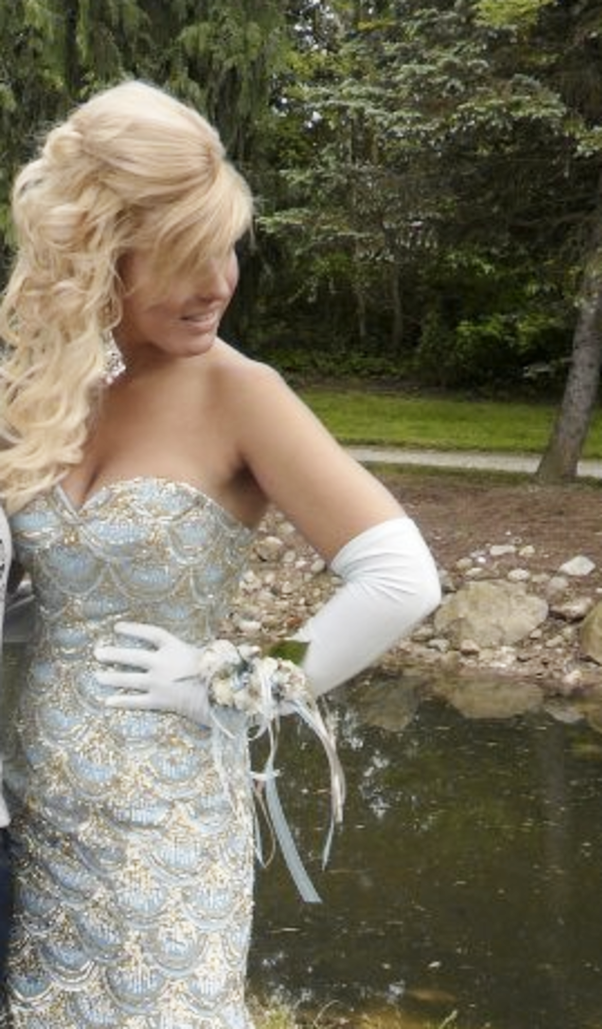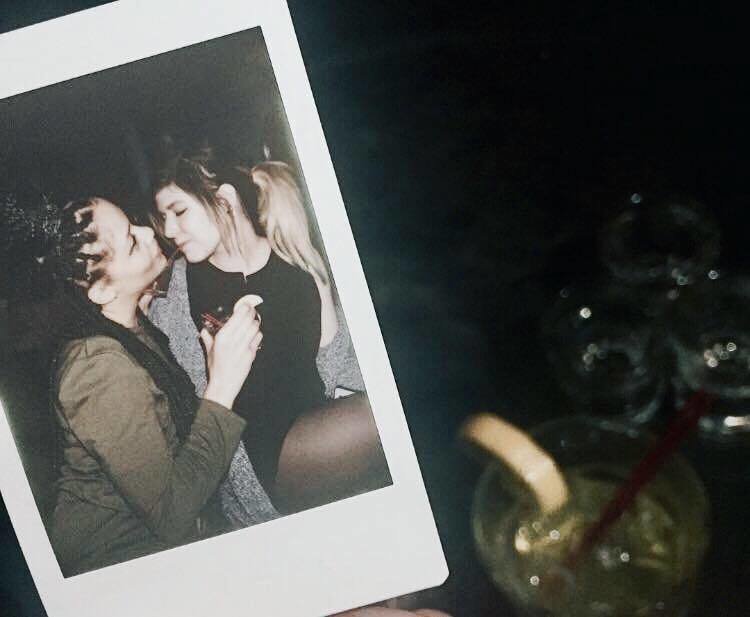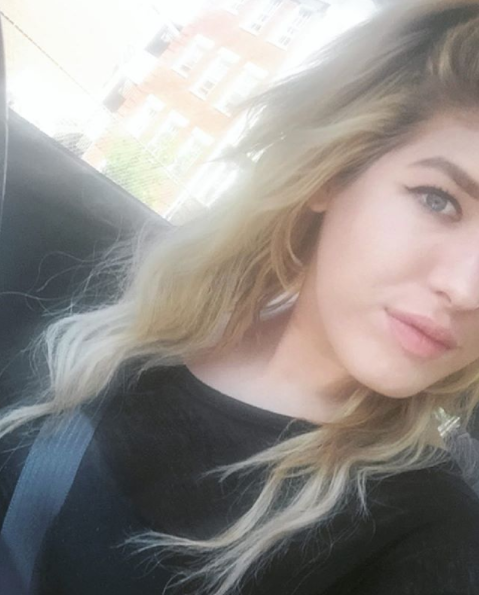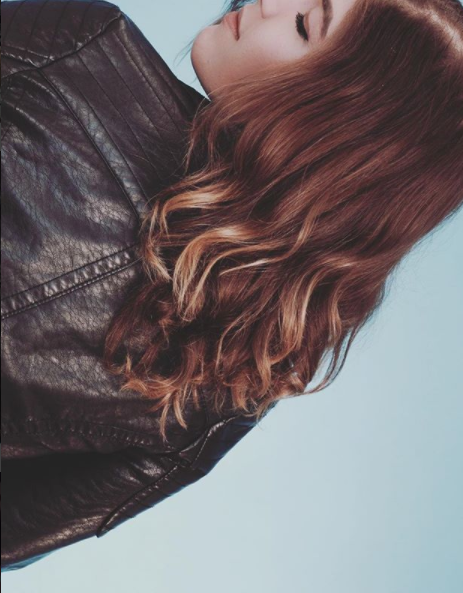“Be patient,” my friends and family tried to tell me. “Your hair will grow!”
And it did grow, but it didn’t grow fast enough. A milestone event was approaching (my middle school graduation – LOL) and I wanted long locks.
And fast.
Giphy
I begged my mother to take me to the “fake hair store,” wherever that was. Knowing how desperately I wanted some extra hair length (and how slowly my natural hair grew), she agreed. After rummaging though a local beauty supply store, we managed to find a single track of hair that perfectly matched my hair color.
Before heading to my eighth grade graduation ceremony, I took my newly purchased hair piece and wrapped it around my ponytail. It wasn’t a lot of hair (literally a single track), but it made a difference. My hair was instantly thicker and longer in a matter of seconds.
I was hooked.
Fake hair was never something I “needed,” just something I preferred. My hair was short, but it was still “acceptable” by most standards. I simply wanted length without the wait.
It didn’t really matter what the extensions looked like, as long as I had a fresh set ready to be clipped in before I left the house.
However, I ignored the pain and continued to wear my extensions, day after day. Sometimes I even slept in them — a huge no-no.
I’d notice a few strands of hair would fall out here and there, but I was able to convince myself it wasn’t really an issue.
We had a blast taking photos of ourselves enjoying the Manhattan nightlife — but this particular snapshot sobered me up instantly.
The following morning, I decided to position myself in my bathroom mirror and take a few photos of the back of my head so that I could see how my hair looked at every angle.
After taking a few pics, I scrolled through my over-the-shoulder mirror selfies and was horrified to see that my hair was thinning.
I immediately called my mother, freaking out.
She managed to calm me down, but after looking at my photos, she agreed that there was noticeable damage. She suggested I make an appointment with a dermatologist.
She tested me for Polycystic Ovary Syndrome (PCOS), an endocrine system disorder that sometimes results in hair loss. But that wasn’t it.
Once PCOS was ruled out, my doctor arranged for me to see an endocrinologist who would determine if I had any thyroid issues that might cause hair loss. But the endocrinologist confirmed that my thyroid was “normal.”
I was nervous, but had hope that my hair issues were only temporary.
But I didn’t — I learned that alopecia areata is an autoimmune skin disease in which the immune system attacks the hair follicles and causes hair on the scalp to fall out. More often than not, the hair does not grow back.
Traction alopecia, on the other hand, is hair loss due to traction, or pulling. It’s often reversible and occurs when you put your hair under constant strain. It can be caused by very tight ponytails, tight braids or cornrows, dreadlocks, and — ahem — extensions.
It’s no exaggeration to say that I was addicted to my extensions. They were like a security blanket, and it was difficult to let them go.
So it might seem silly that it’s a day-to-day struggle for me to “accept” my hair. But in this internet age, it’s hard to not to compare my hair to the models and influencers I see on my Instagram feed.
But I finally realize I don’t need to wear extensions to feel beautiful. It took me 10 years (and a hair-loss scare) to get to that place, but I’m proud to say I’m there.





title: “I Wore Extensions For 10 Years Then A Chunk Of My Hair Fell Out” ShowToc: true date: “2024-09-11” author: “Tim Blaine”
“Be patient,” my friends and family tried to tell me. “Your hair will grow!”
And it did grow, but it didn’t grow fast enough. A milestone event was approaching (my middle school graduation – LOL) and I wanted long locks.
And fast.
Giphy
I begged my mother to take me to the “fake hair store,” wherever that was. Knowing how desperately I wanted some extra hair length (and how slowly my natural hair grew), she agreed. After rummaging though a local beauty supply store, we managed to find a single track of hair that perfectly matched my hair color.
Before heading to my eighth grade graduation ceremony, I took my newly purchased hair piece and wrapped it around my ponytail. It wasn’t a lot of hair (literally a single track), but it made a difference. My hair was instantly thicker and longer in a matter of seconds.
I was hooked.
Fake hair was never something I “needed,” just something I preferred. My hair was short, but it was still “acceptable” by most standards. I simply wanted length without the wait.
It didn’t really matter what the extensions looked like, as long as I had a fresh set ready to be clipped in before I left the house.
However, I ignored the pain and continued to wear my extensions, day after day. Sometimes I even slept in them — a huge no-no.
I’d notice a few strands of hair would fall out here and there, but I was able to convince myself it wasn’t really an issue.
We had a blast taking photos of ourselves enjoying the Manhattan nightlife — but this particular snapshot sobered me up instantly.
The following morning, I decided to position myself in my bathroom mirror and take a few photos of the back of my head so that I could see how my hair looked at every angle.
After taking a few pics, I scrolled through my over-the-shoulder mirror selfies and was horrified to see that my hair was thinning.
I immediately called my mother, freaking out.
She managed to calm me down, but after looking at my photos, she agreed that there was noticeable damage. She suggested I make an appointment with a dermatologist.
She tested me for Polycystic Ovary Syndrome (PCOS), an endocrine system disorder that sometimes results in hair loss. But that wasn’t it.
Once PCOS was ruled out, my doctor arranged for me to see an endocrinologist who would determine if I had any thyroid issues that might cause hair loss. But the endocrinologist confirmed that my thyroid was “normal.”
I was nervous, but had hope that my hair issues were only temporary.
But I didn’t — I learned that alopecia areata is an autoimmune skin disease in which the immune system attacks the hair follicles and causes hair on the scalp to fall out. More often than not, the hair does not grow back.
Traction alopecia, on the other hand, is hair loss due to traction, or pulling. It’s often reversible and occurs when you put your hair under constant strain. It can be caused by very tight ponytails, tight braids or cornrows, dreadlocks, and — ahem — extensions.
It’s no exaggeration to say that I was addicted to my extensions. They were like a security blanket, and it was difficult to let them go.
So it might seem silly that it’s a day-to-day struggle for me to “accept” my hair. But in this internet age, it’s hard to not to compare my hair to the models and influencers I see on my Instagram feed.
But I finally realize I don’t need to wear extensions to feel beautiful. It took me 10 years (and a hair-loss scare) to get to that place, but I’m proud to say I’m there.





title: “I Wore Extensions For 10 Years Then A Chunk Of My Hair Fell Out” ShowToc: true date: “2024-09-23” author: “Alvin Seals”
“Be patient,” my friends and family tried to tell me. “Your hair will grow!”
And it did grow, but it didn’t grow fast enough. A milestone event was approaching (my middle school graduation – LOL) and I wanted long locks.
And fast.
Giphy
I begged my mother to take me to the “fake hair store,” wherever that was. Knowing how desperately I wanted some extra hair length (and how slowly my natural hair grew), she agreed. After rummaging though a local beauty supply store, we managed to find a single track of hair that perfectly matched my hair color.
Before heading to my eighth grade graduation ceremony, I took my newly purchased hair piece and wrapped it around my ponytail. It wasn’t a lot of hair (literally a single track), but it made a difference. My hair was instantly thicker and longer in a matter of seconds.
I was hooked.
Fake hair was never something I “needed,” just something I preferred. My hair was short, but it was still “acceptable” by most standards. I simply wanted length without the wait.
It didn’t really matter what the extensions looked like, as long as I had a fresh set ready to be clipped in before I left the house.
However, I ignored the pain and continued to wear my extensions, day after day. Sometimes I even slept in them — a huge no-no.
I’d notice a few strands of hair would fall out here and there, but I was able to convince myself it wasn’t really an issue.
We had a blast taking photos of ourselves enjoying the Manhattan nightlife — but this particular snapshot sobered me up instantly.
The following morning, I decided to position myself in my bathroom mirror and take a few photos of the back of my head so that I could see how my hair looked at every angle.
After taking a few pics, I scrolled through my over-the-shoulder mirror selfies and was horrified to see that my hair was thinning.
I immediately called my mother, freaking out.
She managed to calm me down, but after looking at my photos, she agreed that there was noticeable damage. She suggested I make an appointment with a dermatologist.
She tested me for Polycystic Ovary Syndrome (PCOS), an endocrine system disorder that sometimes results in hair loss. But that wasn’t it.
Once PCOS was ruled out, my doctor arranged for me to see an endocrinologist who would determine if I had any thyroid issues that might cause hair loss. But the endocrinologist confirmed that my thyroid was “normal.”
I was nervous, but had hope that my hair issues were only temporary.
But I didn’t — I learned that alopecia areata is an autoimmune skin disease in which the immune system attacks the hair follicles and causes hair on the scalp to fall out. More often than not, the hair does not grow back.
Traction alopecia, on the other hand, is hair loss due to traction, or pulling. It’s often reversible and occurs when you put your hair under constant strain. It can be caused by very tight ponytails, tight braids or cornrows, dreadlocks, and — ahem — extensions.
It’s no exaggeration to say that I was addicted to my extensions. They were like a security blanket, and it was difficult to let them go.
So it might seem silly that it’s a day-to-day struggle for me to “accept” my hair. But in this internet age, it’s hard to not to compare my hair to the models and influencers I see on my Instagram feed.
But I finally realize I don’t need to wear extensions to feel beautiful. It took me 10 years (and a hair-loss scare) to get to that place, but I’m proud to say I’m there.




